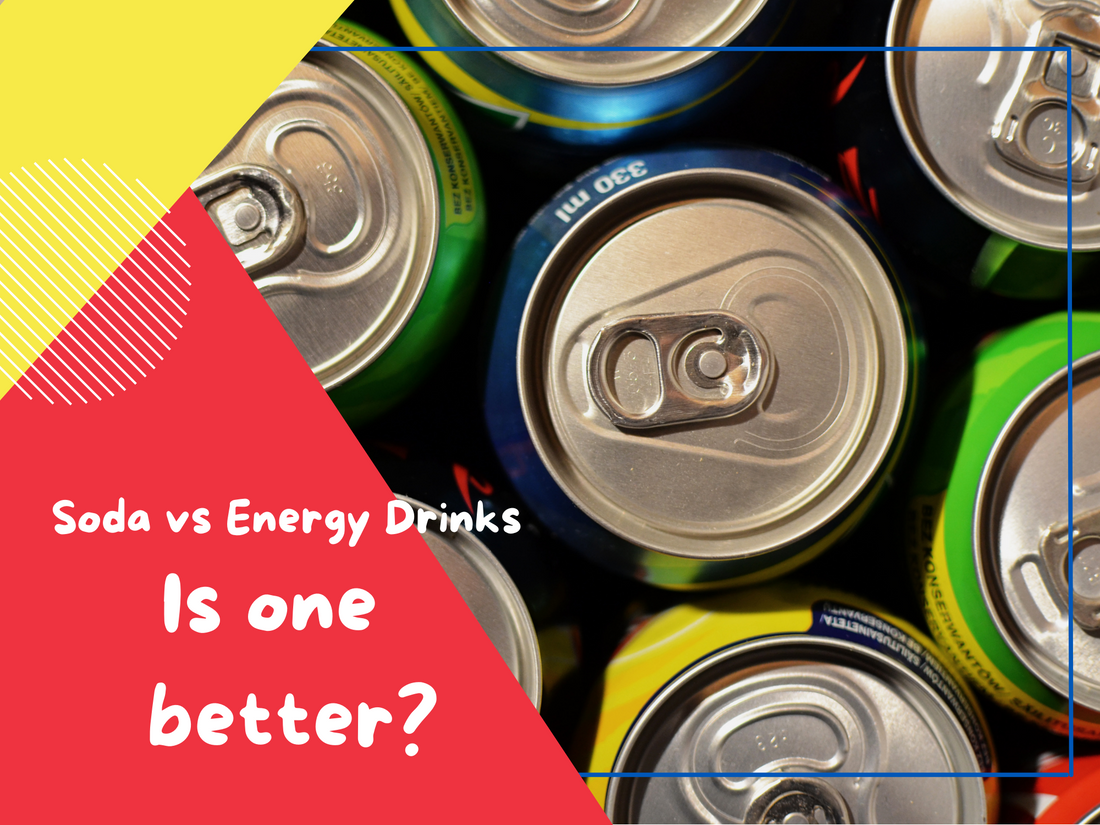Energy Drinks Versus Soda
Do you have stuff you have to do, but you just cannot drum up the energy?
Or maybe the game was so exciting last night you had to stay up to see who won, and now you have to work this morning. Or you have a hard time concentrating, and a dose of caffeine brings things into focus. Or maybe you need a little afternoon lift.
Why you need a caffeine boost is not the question. The question is what is better for your health?
Energy Drinks
Or
Soda, Pop, or Coke?
Energy drinks have made a splash since Red Bull hit the market in the mid-1990s. Their alluring advertising, added energy boosters (taurine, carnitine, Panax ginseng, guarana extract, inositol, etc.), bright colors, and numerous flavors have combined to take the market by storm.
But are they better for you than caffeinated soda or diet soda drinks? It depends on the ingredients and your consumption rate.
Similarities Between Energy Drinks and Sodas
Sugar
Many energy drinks and sodas have a major drawback in common. They are loaded with sugar. A 12 oz serving of a regular caffeinated soda contains 39-46 grams of sugar or 3.25-3.83 grams per ounce.

The sugar content in energy drinks is often higher per ounce serving than regular sodas. For example:
- An 8.4 oz Red Bull contains 39 grams of sugar or 4.64 grams per ounce.
- A 16 oz can of Monster hides the total sugar in one can by splitting the nutritional information into two servings. Half of the can contains 54 grams of sugar or 6.75 grams per ounce. (If you drink the whole can, you get 108 grams of sugar.)
- A 12 oz Rockstar contains 47 grams of sugar or 3.92 grams per ounce.
Added sugars in beverages are empty calories. The Center for Disease Control (CDC) connects obesity, heart disease, type II diabetes, kidney disease, gout, tooth decay, and more to frequently drinking beverages with added sugar.
To help maintain a healthy weight and diet, the CDC recommends limiting suga- laden drinks. The American Heart Association (AHA) recommends men limit sugar intake to 36 grams per day and women and children to 25 grams. A single serving of regular soda or energy drink knocks that recommendation out of the park!
Artificial Sweeteners
Lucky for us, there are numerous sugar-free, low-calorie caffeinated beverages to choose from. However, artificial sweeteners may harm beneficial intestinal bacteria (gut microbiome). The gut microbiome affects nutrient absorption, immune system functioning, heart health, and more.
In addition, some studies suggest artificial sweeteners may increase sugar cravings, causing psychological temptations to consume more carbohydrates.
Caffeine Content
Ounce per ounce, energy drinks contain more caffeine than caffeinated sodas. Barq’s Root Beer is on the low side of the caffeine spectrum with 22 mg of caffeine in 12 ounces, and Pepsi Zero Sugar is on the high side with 69 mg in 12 ounces. Energy drinks, in comparison, run the gamut from 80 mg in an 8.4 oz Red Bull to 300 mg in a 16 oz Bang.

The Food and Drug Administration (FDA) declares 400 mg of caffeine a day is not associated with dangerous side effects for normal, healthy adults. However, regular caffeine use builds tolerance, requiring higher caffeine doses to achieve the same wake me up effect. Natural ingredients that contain caffeine include guarana extract, coffee beans, cocoa beans, green tea, yerba maté, guayusa, and yaupon holly.
Differences Between Energy Drinks and Sodas
Regardless of being high-calorie or diet, energy drinks add additional ingredients besides calories and caffeine to boost energy levels.
Added Energy Boosters
Red Bull, Monster, 5-Hour Energy, etc. add additional forms of sugar to increase energy levels. Inositol and glucuronolactone are carbs formed from glucose.
B-Vitamins are essential to convert food into energy. Hence, many energy drink brands contain various levels of B-Vitamins.
They also add amino acids like taurine, carnitine, or tyrosine. While there may be some physical performance benefits to taking these amino acids, there appear to be no mental performance benefits. According to Gayle Nicholas Scott (Assistant Professor, Eastern Virginia Medical School), caffeine is the major performance booster in energy drinks.
Some energy drinks include Panax ginseng. Various studies conclude Panax ginseng supplementation provides a minor improvement in self-reported calmness, well-being, and cognition. Cognitive benefits were best noted at 400 mg Panax ginseng doses.
Panax ginseng dosage amounts in energy drinks are often unknown. Its inclusion is only noted in the ingredients list.
Other Nutrients
Depending on the target audience, some energy drinks may add vitamins, antioxidants (immune boosting), electrolytes (calcium, magnesium, potassium), or other nutrients. These types of energy drinks provide substantially more nutrients than soda.
Phosphoric Acid (Soda)
Many cola sodas, regular and diet, include phosphoric acid. Studies indicated regular female cola drinkers have significantly reduced bone mineral density. Oth the other hand, most energy drinks do not contain phosphoric acid.
In addition, the high acid content of diet soda can damage tooth enamel, resulting in tooth erosion. The acid in colas eats teeth. And sugar causes tooth decay. Both are strikes against drinking soda.
Not All Energy Drinks are Created Equal
While pursuing caffeinated beverage options at the convenience store, you might think there isn’t a healthy choice with all the added sugars, chemicals, and artificial colors and flavors. However, healthier and more cost-effective energy-boosting drinks are available if you know what to look for.
Start with the ingredients list. Healthy energy drinks are formulated with clear and easy-to-read ingredients, little to no carbs, and a few added nutrients. Regular high caffeine use may result in irritating side effects, so use caffeine wisely. Choose energy drinks containing caffeine dosages at or below 100 mg.
Do your energy drink nutrition homework before you get in a bind and start grabbing. Take the time to investigate ingredients. What functions do they serve in an energy drink? And are those ingredients going to help you meet your goals?
Teacher Power Energy Drinks
For healthy energy drinks, check out Teacher Power’s energy drink mixes! We have four delicious fruit flavors: Black Cherry, Raspberry, Fruit Punch, and my favorite, Strawberry Lemonade. One scoop contains a full array of B-Vitamins and 100 mg of caffeine.
But if you don’t need that much caffeine, use a half-scoop. Teacher Power is on your side to meet your needs. And with the powder is so convenient. You can mix it up anywhere.

In addition, we have a new immune-boosting energy drink with the added benefits of Vitamin D, Zinc, Elderberry, Echinacea, Curcumin, and Ginger. Take in the season with these delicious drinks (Caramel Apple and Wassail). They can be enjoyed hot or cold.
Teacher Power Energy Drinks come in a powder that puts you in control. No more hunting the convenience store shelves for a healthy energy boost. We have you covered at a quarter of the cost. And our mixes are all vegetarian, too.
Let go of all that flashy hype. Put Teacher Power’s to work for you! You got this with Teacher Power in your mug.
By: Jae O. Haroldsen
The content of Teacher Power’s website is for information only, not advice or guarantee of outcome. Information is gathered and shared from reputable sources; however, Teacher Power is not responsible for errors or omissions in reporting or explanation. No individuals, including those taking Teacher Power products, should use the information, resources or tools contained within to self-diagnosis or self-treat any health-related condition. Teacher Power gives no assurance or warranty regarding the accuracy, timeliness or applicability of the content.
Sources:
Smith, Lauren. “Energy Drinks vs. Soda: What’s Worse for Your Health.” HealthiNation. 2018. https://www.healthination.com/food/energy-drinks-vs-soda/
Al-Shaar, Laila et al. “Health Effects and Public Health Concerns of Energy Drink Consumption in the United States: A Mini-Review.” Frontiers in Public Health. 2017. https://www.frontiersin.org/articles/10.3389/fpubh.2017.00225/full
Link, Rachael. “8 Potential Side Effects of Consuming Too Much Diet Soda.” Healthline. 2021. https://www.healthline.com/nutrition/symptoms-of-drinking-too-much-diet-soda
“Get the Facts: Sugar-Sweetened Beverages and Consumption.” CDC. 2021. https://www.cdc.gov/nutrition/data-statistics/sugar-sweetened-beverages-intake.html
“How Too Much Sugar Affects Your Health Infographic.” American Heart Association. https://www.heart.org/en/healthy-living/healthy-eating/eat-smart/sugar/how-too-much-added-sugar-affects-your-health-infographic
“Caffeine Chart.” Center for Science in the Public Interest. 2021. https://cspinet.org/eating-healthy/ingredients-of-concern/caffeine-chart
“Spilling the Beans: How Much Caffeine is Too Much?” FDA. 2018. https://www.fda.gov/consumers/consumer-updates/spilling-beans-how-much-caffeine-too-much
Scott, Gayle Nicholas. “Taurine in Energy Drinks: Backed by Research or Just Bull?” Medscape. 2013. https://www.medscape.com/viewarticle/804080
Patel, Kamal. “Panax Ginseng.” Examine.com. 2021. https://examine.com/supplements/panax-ginseng/
Tucker KL, Morita K, Qiao N, Hannan MT, Cupples LA, Kiel DP. Colas, but not other carbonated beverages, are associated with low bone mineral density in older women: The Framingham Osteoporosis Study. Am J Clin Nutr. 2006 Oct;84(4):936-42. doi: 10.1093/ajcn/84.4.936. PMID: 17023723.

